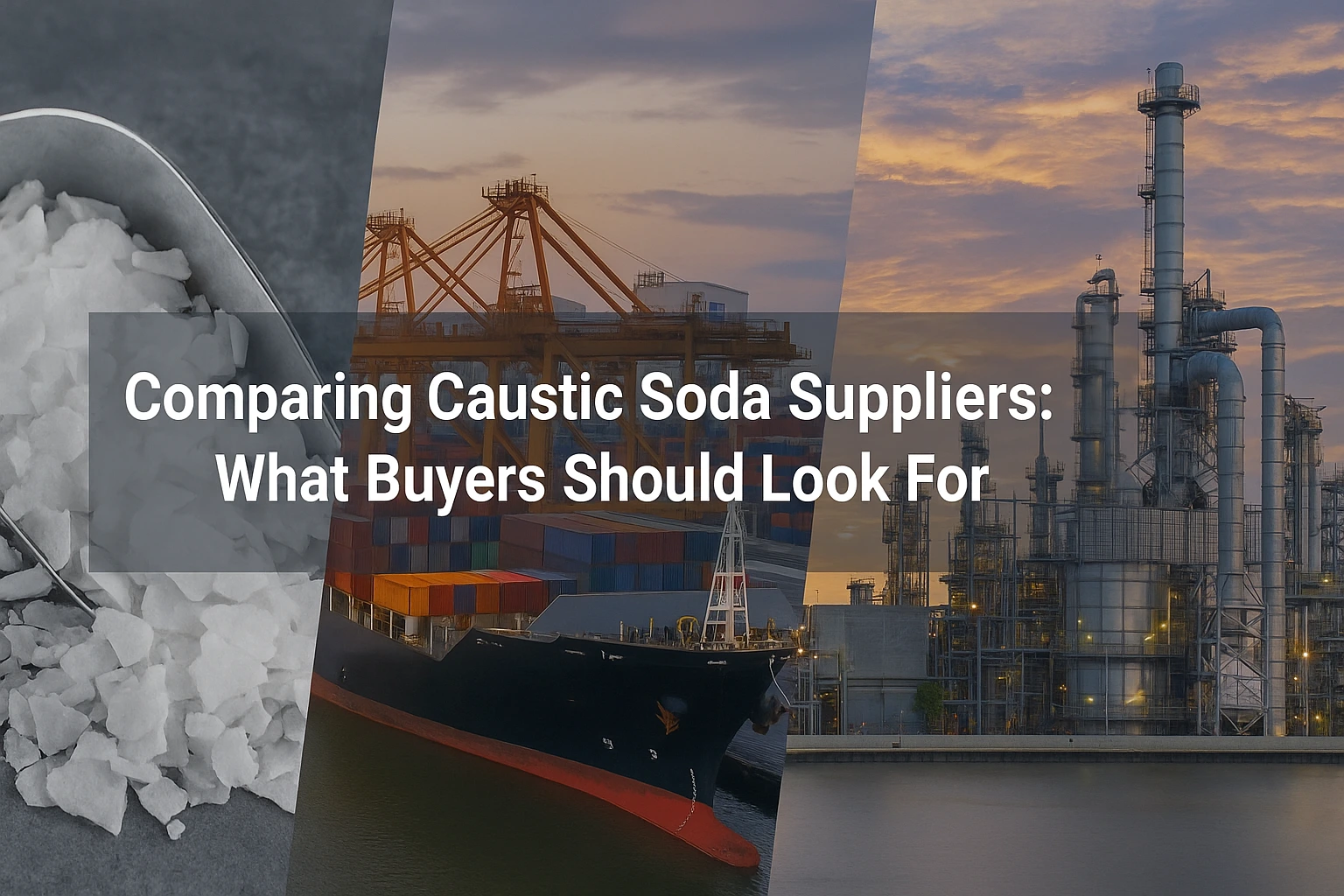Comparing Caustic Soda Suppliers: What Buyers Should Look For

Table of Content
-
Introduction: The Challenge of Choosing the Right Caustic Soda Supplier
-
Core Criteria: Purity, Quality Assurance & Certifications
-
Price, Logistics, and Flexibility: Beyond the Lowest Quote
-
Supplier Reputation, Support, and Market Position
-
Conclusion: Building Profitable, Reliable Sourcing Partnerships
1. Introduction: The Challenge of Choosing the Right Caustic Soda Supplier
Buying caustic soda (NaOH) in today’s global market is about more than just price. With demand exceeding 95 million tons in 2025 and supply shaped by price volatility, environmental priorities, and trade regulations, suppliers range from multinational giants to regional specialists. Choosing the right vendor means balancing technical, logistical, and economic factors while ensuring compliance and security of supply.
2. Core Criteria: Purity, Quality Assurance & Certifications
-
Purity first: Leading suppliers offer ≥98–99% NaOH, backed by Certificate of Analysis (COA) and meet international standards (ISO, REACH, HACCP).
-
Quality auditing: Buyers should check for robust QC procedures, request recent test results, and, for bulk orders, utilize pre-shipment sample testing or third-party inspection to verify claims.
-
Packaging: Ensure moisture-resistant packaging (double-layered bags or drums), correct labeling, and resilient palletizing to prevent hygroscopicity losses during shipping.
-
Certifications: Verified suppliers furnish full compliance certificates, SDS/MSDS, and documentation for industrial, food, or pharma applications as needed.
3. Price, Logistics, and Flexibility: Beyond the Lowest Quote
-
Transparent pricing: Compare landed costs (including shipping, insurance, customs duties, and surcharges), not just FOB/CIF quotes, and negotiate bulk discounts or flexible MOQs where possible.
-
Logistics expertise: Evaluate the supplier’s ability to manage timely shipments, especially for hazardous cargo. Regional distributors, sourcing agents, and global traders can help bridge distance and language gaps.
-
Inventory and service: Prefer suppliers with backup stocks, local warehouses, or responsive regional teams, which reduces delivery risks and supports quick fulfillment during demand spikes or plant outages.
4. Supplier Reputation, Support, and Market Position
-
Track record: Favor vendors with international export experience, strong customer references, and good after-sales support—a critical differentiator for long-term partnerships.
-
Market standing: Industry leaders such as Dow, Olin, Tata Chemicals, Solvay, and regional champions (e.g., Istay Kimya, Nanyang Chemical) combine technical expertise with global distribution, quality innovation, and sustainability commitments.
-
Responsiveness: Ensure clarity on Incoterms, complaint handling, and support for documentation, audits, and logistics troubleshooting. Trustworthy suppliers streamline compliance and resolve unexpected issues quickly.
5. Conclusion: Building Profitable, Reliable Sourcing Partnerships
Comparing caustic soda suppliers successfully is about much more than the lowest quote. Purity, documentation, reliability, and partnership value define the best NaOH vendors in 2025, driving business resilience and operational success throughout supply chain cycles.

Leave a Comment